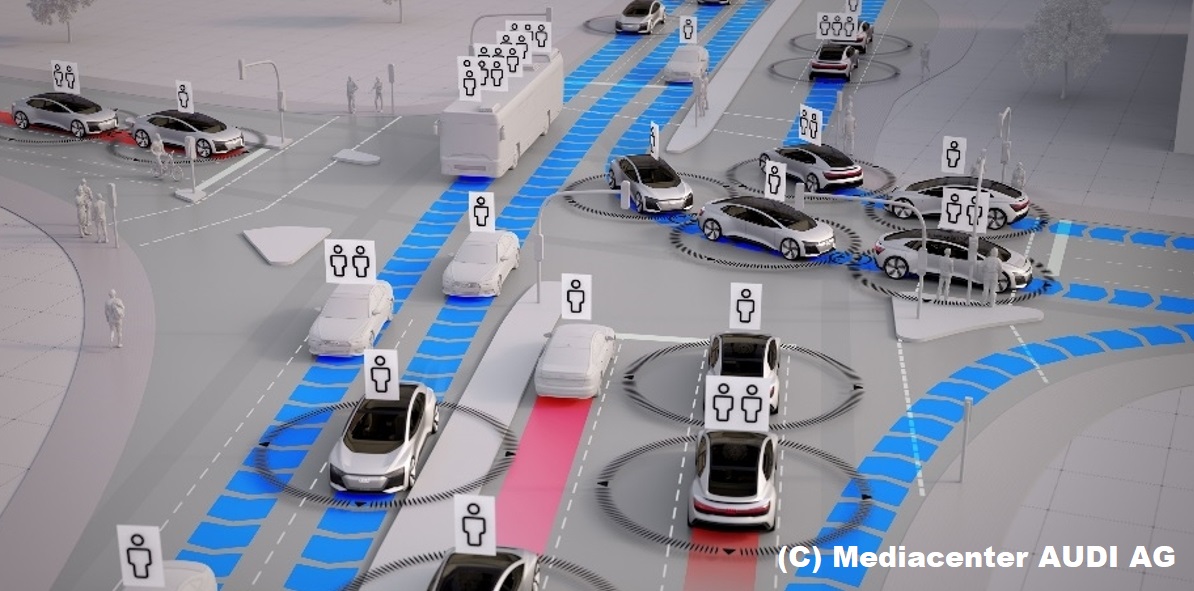Connected Mobility
Connected Mobility

It is now common knowledge that vehicles will be highly connected in the future in order to offer innovative functions. It includes simple comfort applications, but also complex and real-time-critical security services such as cooperative driving actions and swarm intelligence. Autonomous driving defines further challenging requirements related to networking and security. In the context of connected mobility, a vehicle should be seen primarily as part of a larger ecosystem with other participants (e.g. people, cyclists, traffic light systems, buildings, etc.). All this supports to handle future mobility challenges and to find suitable solutions for available problems.
In our Connected Mobility group we are particularly concerned with V2X communication technologies (i.a., IEEE 802.11p, LTE, 5G) and network architectures (cloud, edge/fog, node computing). Another focus is the simulation and modeling of connected mobility systems. We are focusing on the analysis of protocols, propagation and antenna characteristics at lower layers as well as on the evaluation of future scenarios, innovative services, and mobility networks. Distributed and coupled multi-level simulation using HLA, behavior modeling, and the test of autonomous vehicles are further central research topics. The simulation environment VEINS, that combines road traffic simulation with network simulation, has been initially developed at our chair is currently extended in our projects.
There is a long-standing cooperation with the automotive industry, in particular through the joint PhD-program INI.FAU in cooperation with the Audi AG (http://www.ini.fau.de/) and through the Centre for Digitization in Bavaria. We coordinate the work package Simulation in the lead project of the ZD.B "Virtual Mobility World (ViM)".